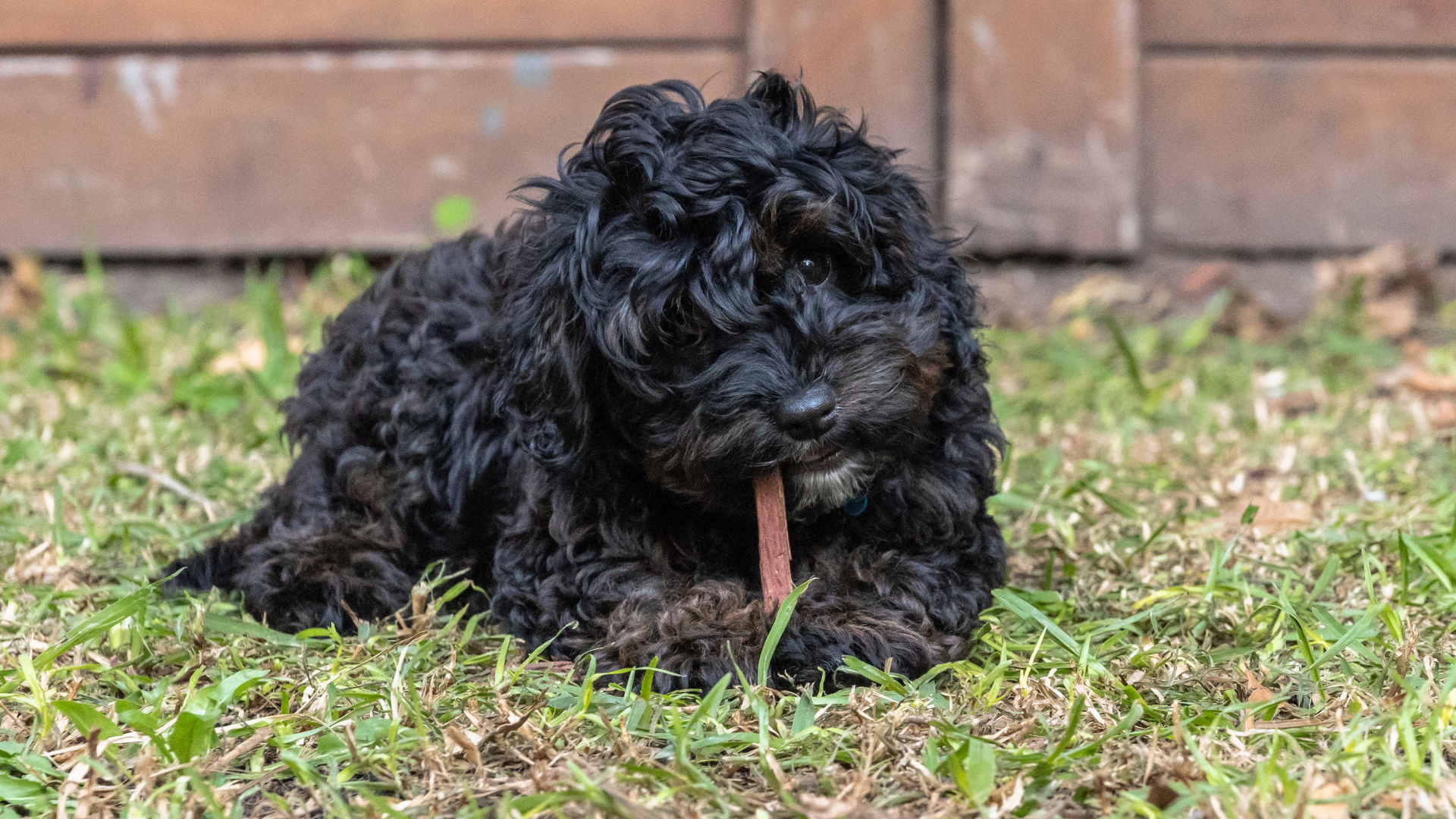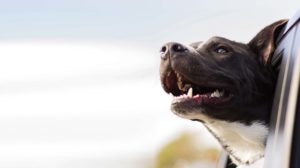Cavoodle| Traits | training | Typical health problems
The section below outlines Cavoodles traits, training and typical health problems.
Cavoodle | Breed highlights
| Breed: | Cavoodles (also known as Cavapoo) are a mixed breed, a cross between a Cavalier King Charles Spaniel and a Poodle (toy, or miniature). |
| Coat type: | Cavoodles have a wavy or curly coat. The way their hair looks depends on which breed the dog genetically resembles (King Charles Cavalier or Poodle). Cavoodles’ hair grow fast and requires regular trimming. |
| Shedding: | The Cavoodle is generally considered a low shedding breed; however, this depends on the coat type. |
| Grooming: | A weekly at-home grooming routine that includes brushing will ensure the coat is kept tangle-free. Professional grooming is recommended to keep the coat properly maintained (the frequency will depend on coat type). |
| Activity level: | Cavoodles are moderately active and require daily walks for fitness and mental stimulation. |
| Apartment friendly: | Cavoodles are suitable for apartment living; however, this breed is social and requires regular play and lots of outdoor exercise. |
| Small children: | Cavoodles are sweet-natured and highly intelligent. They get on well with small children (supervision is always recommended) |
| Other dog friendly: | Cavoodles are playful and interact well with other dogs. |
What type of breed is a Cavoodle?
Cavoodles are a mix between a Cavalier King Charles Spaniel and a Poodle. They are part of the poodle-mix classification of dogs.
History of the Cavoodle
Some claim that Cavoodles may have been bred in America in the 1950s by breeders trying to develop a low-shedding breed. However, it wasn’t until the 1990s that Australia officially recorded their first-ever Cavoodle to be born.
Cavoodle appearance and characteristics
Cavoodles come in various colours such as black and white, black and tan, apricot, caramel or a mix of caramel and white. Cavoodles can vary in appearances, they generally tend to have dark round eyes, a compact face, floppy ears and a more tufted coat.
Cavoodles are small to medium in size. How big they grow depends on the dominant poodle parent. Adult toy Cavoodles generally reach a height of 30 centimetres and weigh up to 5 kilograms. Miniature Cavoodles are slightly larger with adults growing to 38 centimetres and weighing up to 10 kilograms.
Cavoodle personality and temperament
Cavoodles are considered intelligent and eager to please. Their docile nature keeps in line with the personality of Cavalier King Charles, a breed known for its gentle temperament.
Cavoodle breed traits
Cavoodles may look like an adorable teddy bear with a temperament to match, but Cavoodles are vocal, and tend to bark. Cavoodles can bark at strangers, new people who come into their home, for food, when boredom, or in anxious or in pain. Training Cavoodles to bark less is possible but keep in mind, barking is part of the package.
Cavoodle Lifespan
Cavoodles generally have a lifespan between 10 and 14 years.
The dos and don’ts of caring for a Cavoodle
Do: While generally considered a low-shedding mixed breed, Cavoodles require weekly or twice-weekly brushing. Brushing aids in keeping the hair of a Cavoodle’s coat tangle-free. Professional grooming (frequency will depend on coat type) is recommended to keep the hair around the eyes, mouth and genitalia trimmed for comfort and good hygiene.
Don’t: While Cavoodles fit well in any setting, this breed should not be left on its own for too long as they may begin to experience anxiety.
Do: Start training early! Cavoodles are responsive to learning. Training your Cavoodle should start around 8 weeks and always remember positive reinforcement and repetition, with a healthy dose of patience will bring the best result.
Common Conditions for Cavoodle
| Conditions | Symptoms can include~ | Highest cost for a single treatment* |
| Gastrointestinal (tummy) Tract Condition | · Diarrhoea, vomiting or constipation. · Blood or mucous in stool/vomit. · Increased frequency/urgency passing stool. · Weight loss. · Loss of appetite and interest in food. · They may seem more tired than usual. | $2,148 |
| Ingestion of foreign item or toxin. | · Vomiting, diarrhoea, loss of appetite. · Abdominal pain, frequent stretching, vocalising or sensitivity to touch. · Lethargy. · Drooling. | $15,587 |
| Ear Conditions -including infections and allergies | · Scratching, rubbing, or pawing at one of both ears. · Head shaking · Odour or discharge from the ears ·Ears may be red or warm to the touch | $4,627 |
| Skin Conditions, including – infections and allergies | · Scratching, biting, or rubbing the skin. · Signs of irritation, including red skin, scabs, bleeding, pustules, or weeping. · Hair loss, flaky skin, texture changes, lumps or an unusual or unpleasant smell. | $11,242 |
| Anal Sac Problems | · Vomiting, diarrhea, Loss of appetite. · Abdominal pain, frequent stretching, vocalising or sensitive to touch. · Lethargy. · Vomiting, diarrDrooling. | $5,999 |
Disclaimer: Reimbursement for these claims would be subject to limits, such as annual benefit limits or sub-limits, benefit percentage, applicable waiting periods and any applicable excess. Cover is subject to the policy terms and conditions. You should consider the relevant Product Disclosure Statement or policy wording available from the relevant provider.
* Please note that the values calculated are based on all claims for that condition and medically related conditions in each calendar year.
Types of pet insurance from PetSure
| Policy type | Policy description |
| Accidents | This product provides cover for specified accidental injuries up to an annual policy limit. Most policies will reimburse a stated Benefit Percentage that is typically 80% of eligible vet bills. Some condition sub-limits may also apply, with all annual limits resetting each year when the policy is renewed. It’s important to know that only defined accidents as listed in the policy’s Product Disclosure Statement will be covered (other conditions will not be covered). More information on what is typically covered and not covered in our find a policy page. |
| Basic care | This product provides limited cover for both specified accidental injuries and illness conditions, with a stated Benefit Percentage that can range from 60-90%. Treatments and medications for eligible conditions are typically covered subject to the applicable policy limits. Claimable conditions have an annual condition limit , meaning once the condition limit (subject to the annual benefit limit) has been reached in an annual policy period, costs relating to that condition will need to be covered entirely by the policyholder. However, annual benefit limits and applicable annual condition limits reset on renewal each year. More information on what is typically covered and not covered in our find a policy page. |
| Comprehensive / Accident and Illness | This product provides comprehensive cover for both specified accidental injuries and illness conditions, with a stated Benefit Percentage that will typically range from 70-85%. You can claim up to an annual maximum limit each year, which resets on renewal. Sub-limits for certain items may also apply. More information on what is typically covered and not covered in our find a policy page. |
Insurance products are issued by The Hollard Insurance Company Pty Ltd ABN 78 090 584 473, AFSL 241436 (Hollard) and/or PetSure (Australia) Pty Ltd ABN 95 075 949 923, AFSL 420183 (PetSure) (from 8 May 2023 only), administered by PetSure and promoted and distributed through their authorised representatives and distribution partners.
Any advice provided is general only and does not take into account your individual objectives, financial situation or needs. Cover is subject to the policy terms and conditions. Please consider the Product Disclosure Statement (PDS) to ensure this product meets your needs before purchasing, or choosing to continue with the product. PDS and Target Market Determination available on our partners’ websites. Meet our partners at petsure.com.au/partners.
Pet insurance can help by covering a portion of the eligible vet bill if the unexpected happens. Because it is difficult to predict the costs of veterinary care, it can help to have measures in place to help prepare for the unexpected. Check out our partner network and explore our policy tools to find a pet insurance policy.
Not all conditions or items are covered by Pet Insurance. Refer to the applicable Product Disclosure Statement for information about coverage and exclusions.
Frequently Asked Questions
Cavoodles are generally low shedding. The breed is not 100 per cent hypoallergenic; but, because they shed less, the mixed breed is considered a good option for allergy sufferers.
Depending on the time of year, your Cavoodle will need to visit the groomer either every second month (winter) or as often as every six weeks (summer). Professional groomers will trim hair, nails and perform a range of checks including in and around the ears, around the anus and between the paws.
· Gastrointestinal Illnesses
· Dermatitis and skin conditions
· Ear infection
Small stuffed plush toys, especially one that squeaks and that they can chew are suitable for Cavoodles. You can find a range of toys online or at your nearest pet store.
The top names according to PetSure policy data for Cavoodles born in 2022 is:
Teddy
Coco
Charlie
Milo
Luna
Ruby
Daisy
Archie
Ollie
References
- https://dogs2.fandom.com/wiki/Cavapoo
- https://www.advantagepetcare.com.au/au/new-owners/breed-profile-cavoodle/
- https://thecavoodle.com/famous-cavoodle-owners/
Pet insurance can help by covering a portion of the eligible vet bill if the unexpected happens. Because it is difficult to predict the costs of veterinary care, it can help to have measures in place to help prepare for the unexpected. Check out our partner network and explore our policy tools to find a pet insurance policy.
Not all conditions or items are covered by Pet Insurance. Refer to the applicable Product Disclosure Statement for information about coverage and exclusions.








